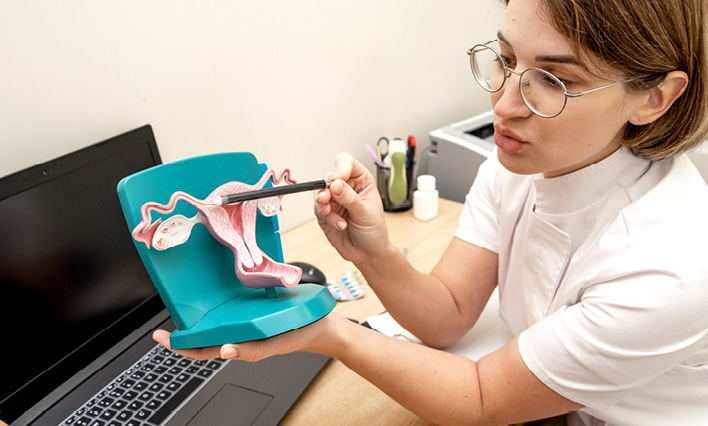Endometriosis is when cells from the lining of your uterus grow in other areas of your body. Some places they can grow are on or under your ovaries and fallopian tubes. This can be painful or cause heavy bleeding and bleeding between periods. It can also make it hard to get pregnant (infertility). This condition occurs in about 10% of women of reproductive age.
There is no cure for endometriosis, but NIH supports research to find new treatments.
Single study leads to dozens of different findings
The Endometriosis: Natural History, Diagnosis, and Outcomes (ENDO) Study observed two groups of women at risk for endometriosis. Researchers wanted to see whether there was a link between endometriosis and chemicals that interrupt the endocrine system (which produces hormones in the body). The ENDO Study found some chemicals were associated with higher rates of endometriosis. These included PFAS, which people can come in contact with through the environment, food, water, and household products.
Pelvic pain can change over time for adolescents with endometriosis
Pelvic pain from endometriosis can look different in teens and adults. A research team asked more than 1,200 adolescents and young adults with and without endometriosis about their pelvic pain. People with endometriosis had more frequent and more intense pelvic pain. But it decreased over two years. In comparison, those without endometriosis had fewer changes in their pelvic pain.
Endometriosis linked to higher stroke risk
Endometriosis can raise your risk for stroke and other cardiovascular conditions. A team used data from 110,000 women in the long-term Nurses’ Health Study II. Women with endometriosis had a 34% greater risk of stroke than women without the disease. This increased risk may be due to higher levels of chronic, whole-body inflammation.
First FDA-approved medication for endometriosis pain
NIH supported research and development for the first FDA-approved medicine for endometriosis pain. The treatment is a prescription pill that works by lowering levels of hormones that can worsen endometriosis pain.
Join an endometriosis clinical trial and help find a solution
Endometriosis and women’s reproductive health in general are growing areas of research. Including people from all backgrounds in clinical research helps scientists develop better treatments. This is important for reducing health disparities among racial and ethnic and gender minority groups. To get there, scientists need the public’s help. One way to do this is by joining a clinical trial.






